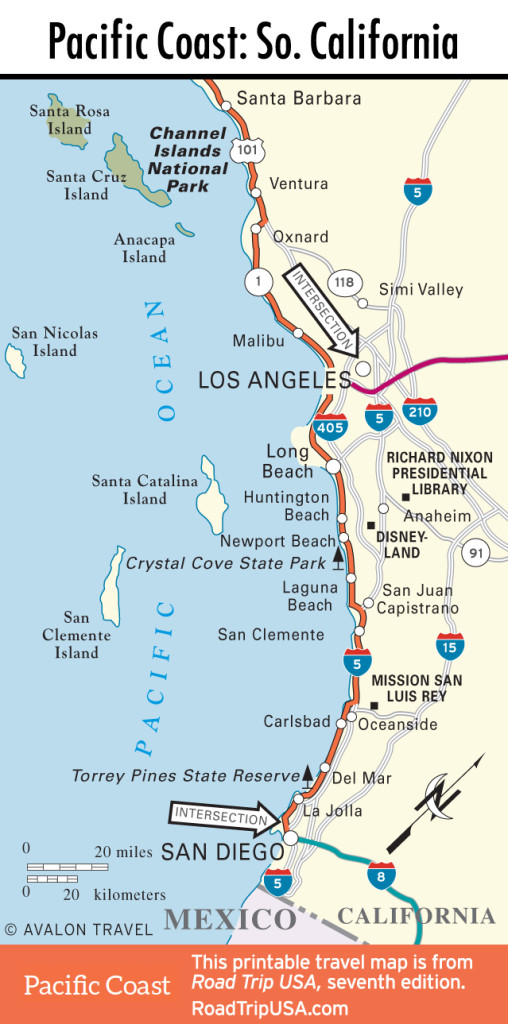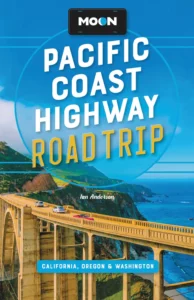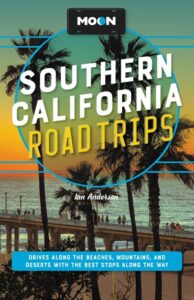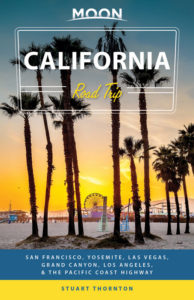San Juan Capistrano to Carlsbad
San Juan Capistrano
Of the 21 missions along the California coast, Mission San Juan Capistrano (949/234-1300, daily, $10 adults) has been the most romanticized. When the movement to restore the missions and preserve California’s Spanish colonial past was at its apogee in the late 1930s, its main theme tune was Leon René’s “When the Swallows Come Back to Capistrano,” popularizing the legend that these birds return from their winter migration every St. Joseph’s Day, March 19. After wintering in Goya, Argentina, they do come back to Capistrano, along with several thousand tourists, but the swallows are just as likely to reappear a week before or a week after—whenever the weather warms up.
The mission, which has lovely bougainvillea-filled gardens, stands at the center of the small eponymously named town, a short detour inland along I-5 from the coast. Besides the birds, the main attractions include the small chapel, the last surviving church where the beatified priest Junípero Serra said mass, widely considered the oldest intact church and perhaps the oldest building of any kind in California, and the ruins of the massive Great Stone Church, a finely carved limestone structure that collapsed in an earthquake in 1812, just six years after its completion. Many visitors to the chapel are terminally ill patients saying prayers to Saint Peregrine, the patron saint of cancer patients.
To get a sense of the huge scale of the Great Stone Church, a replica patterned after the fallen building has been constructed next door and now serves as the official Mission Basilica, open to visitors except during religious services.
Orange County Coast Travel Map
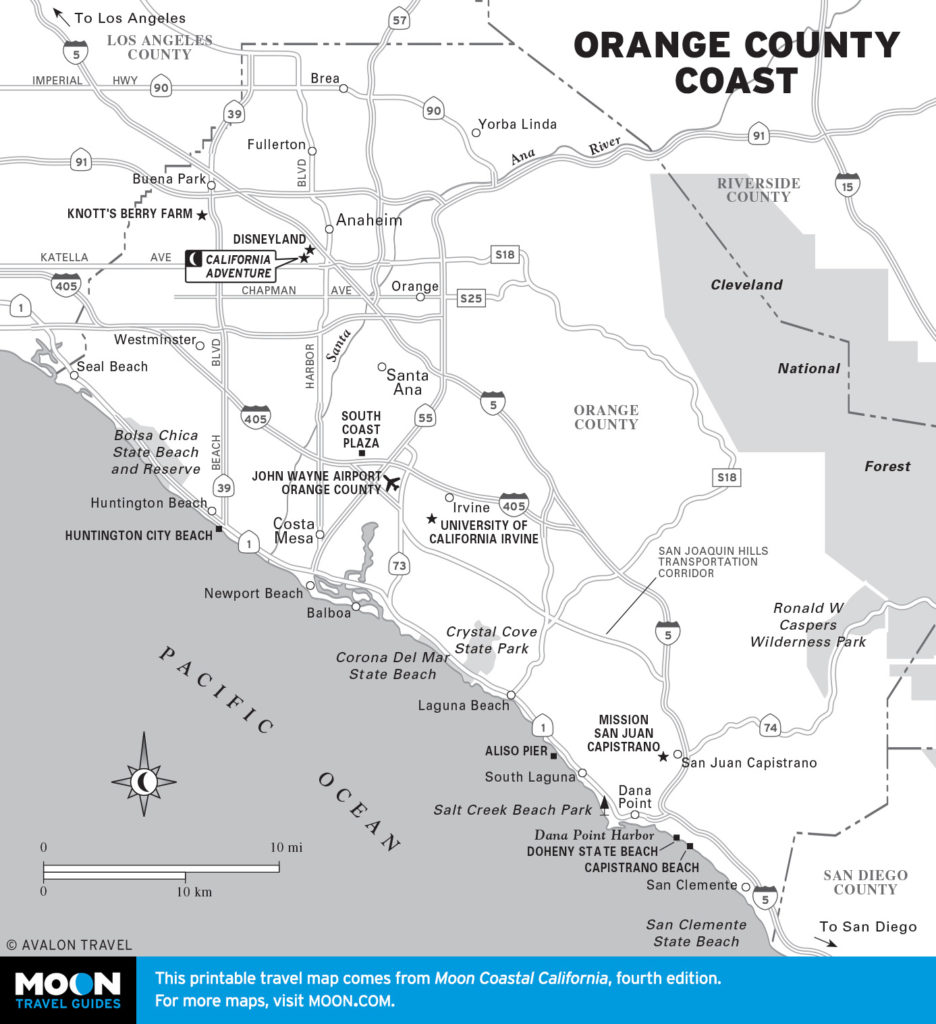
San Clemente
At the southern tip of coastal Orange County, San Clemente marks the midway point between San Diego and Los Angeles. A sleepy beachside community, with frequent Amtrak train service and a nicely undulating stretch of old US-101 (El Camino Real) running through its heart, San Clemente is probably best known as the site of La Casa Pacifica, the one-time “Western White House” of former president Richard Nixon, who lived here following his election in 1968 and during his impeachment in the mid-1970s. The white-walled mission-style house at the south end of Avenida del Presidente (the western frontage road to I-5) is more easily visible from the beach below, though the 25 acres of trees have grown up to obscure it in recent years.
Within a quick walk uphill from the handful of cafés and bars on and around the pier, Beachcomber Inn (949/492-5457, $195 and up) is a tidy old-fashioned motor-court motel facing the open ocean. San Clemente also has a couple of low-key coffee shops, like Rose’s Sugar Shack Café (2319 S. El Camino Real, 949/498-0684), and a great burger place, The Rider’s Club Cafe (1701 N. El Camino Real, 949/388-3758, Tues.-Sun.), in the mission-style downtown business district.
Camp Pendleton and Mission San Luis Rey de Francia
South of San Clemente, the northwest corner of San Diego County is taken up by the U.S. Marines Corps’s massive Camp Pendleton training base, which fills 125,000 acres, running for 17 miles along the coast and about 15 miles inland. (The base motto is “No Beach out of Reach”). Camp Pendleton is the largest undeveloped section of the Southern California coast.
In the sun-bleached hills above the blue Pacific, four miles east of the ocean off I-5 along Hwy-76, Old Mission San Luis Rey de Francia (daily, $7 adults) was the largest and among the most successful of the California missions. Its lands have been taken over by Camp Pendleton, and most of the outbuildings have disappeared, but the stately church at the heart of the complex survives in fine condition, worth a look for the blue-tinted dome atop the bell tower and for the haunting carved stone skull that looks down from the cemetery gate.
A long but worthwhile detour inland from San Luis Rey brings you to one of the least visited but perhaps most evocative of all the California missions, Mission San Antonio de Pala (760/742-3317, Wed.-Sun., $2 adults). Located on the Pala Indian Reservation, 20 miles east of San Luis Rey along Hwy-76, then another 100 yards north along a well-marked side road, Mission San Antonio de Pala is the only California mission still serving its original role of ministering to indigenous people, and it gives an unforgettable impression of what California’s mission era might have been like.
Oceanside
At the southern edge of 125,000-acre Marine Corps Base Camp Pendleton, Oceanside (pop. 176,080) is one of the largest cities between Los Angeles and San Diego, but it offers few tourist attractions—apart from a long fishing pier and guided tours of Camp Pendleton’s amphibious-assault training exercises. But if you’re in the mood to shop for camouflage gear, watch the muscle cars cruise Hill Street, get a $5 G.I. Joe haircut, or drink beer with a gang of young recruits, this is the right place.
Oceanside is also home to one of the last survivors of the old pre-Interstate Coast Highway businesses: The 101 Café (631 S. Coast Hwy., 760/722-5220) has been open for classic road food since 1928. It often hosts classic car rallies and generally glows with neon-lit nostalgia. Other, more retro-minded All-American roadside favorites include the Breakfast Club Diner (228 N. Coast Hwy., 760/722-3124) and a branch of the popular local chain Ruby’s Diner (760/433-7829), at the far end of the Oceanside Pier.
South from Oceanside, all the way to San Diego, a very pleasant alternative to the often-clogged I-5 is the old alignment of US-101, now signed as County Road S21 (and occasionally Coast Highway 101). Slower than the freeway but still in regular use, the old road is now the main drag of quaint beachfront towns like Carlsbad, Leucadia, Encinitas, and Del Mar. If you have the time, it’s a great drive, in sight of the ocean for most of the way.
Carlsbad: La Costa and Legoland
Named for the European spa town of Karlsbad, in the Bohemia region of what’s now the Czech Republic, Carlsbad (pop. 115,877) was established in the 1880s as a spa town and vacation resort. Remnants of the historic resort area still survive along old US-101 in the center of town, and a few flower and strawberry fields have survived the ever-expanding tide of sprawl. These days Carlsbad’s spa-town heritage lives on at Omni La Costa Resort and Spa (760/438-9111, $399 and up), a 600-plus-room complex of luxurious rooms, health spas, golf courses, and tennis courts covering 400 acres of hills on the inland side of I-5.
Carlsbad’s other main attraction is the first American outpost of the popular European children’s theme park Legoland (877/344-5346, $96 adults, $91 children). Covering 128 acres above the Pacific Ocean, the park is divided into multiple areas, including Miniland USA, where miniature landscapes modeled on New York, New Orleans, New England, and Southern California have all been constructed using millions of the trademark plastic bricks.
South Carlsbad State Beach (760/438-3143, $10-15 per car, seasonal rate), three miles south of town, is one of the nicest and most popular places to camp on the Southern California coast, with its spacious campsites ($35-50) with hot showers spread out along a sandstone bluff above a broad beach. However, swimming can be dangerous because of strong riptides. If you don’t want to camp or pay the parking fee, leave your car at the park entrance, which is well marked on a surviving stretch of the old US-101 highway.
Southern California Travel Map
